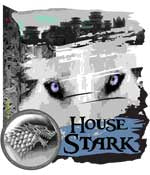Successful Business Models for Hybrid Screen Printing:
How to take advantage of hybrid printing to sell and market t-shirts
Hybrid printing gives new business models to traditional screen printers and lets them reduce costs while serving their traditional markets. As the screen printing industry changes, so does traditional screen printing business models. One of these changes is the rise of online shirt sellers and t-shirt subscription services. These services are ubiquitous in the screen printing market. Another change is hybrid screen printing’s simplicity. Introducing hybrid screen printing reduces the need for technical screen printing knowledge and lowers capital equipment expenses. Being able to print 50, 8-color screen printed shirts by only making 1 screen and on a 4-color manual press opens up whole new possibilities for screen printers. Read about just two of the ways hybrid printing creates new business opportunities for screen printers.
Subscription T-shirt Services Benefit From Hybrid Screen Printing
T-shirt subscription services are one of many business models that benefits from the advantages of hybrid screen printing. Monthly subscribers provide a reliable revenue stream. These subscription services are popular with today’s target demographic with the most disposable income. Yet, this new business model would traditionally expose screen printers to unnecessary costs and production headaches. With traditional screen printing, you always print more shirts than you have subscribers incase extras are needed. Whether it got lost in the mail or other problems arose with the printed garment, you need extras on hand. But how many extras should you print? If you printed too much it just sits on your shelf and becomes dead stock. This wastes money with a printed shirt you were not selling. Too few makes your customer service suffer. Additionally, many subscription tee shirt companies leave the job set up after the run. This ties up their machine and slows down production on other orders.
By using hybrid digital screen printing, you remove the two most burdensome headaches that subscription t-shirt printers face. Your hybrid printer can easily handle 300+ shirt runs and once you have printed the required amount, you would not need to produce more. This is because hybrid printing has all the advantages of screen printing while also being able to efficiently produce limited runs (just like a direct-to-garment (DTG) printer). Such flexibility removes the necessity to screen print too many “extra” shirts, saving both storage space and the need to print a shirt that might not sell.
Since there is virtually no pre-press/set up time when hybrid printing compared to traditional screen printing, subscription t-shirt printers would not have to leave the job set up. Reprinting one or a dozen shirts would be as easy as printing your white underbase and recalling the job file from your computer. In a matter of minutes, you would have the job ready to print. This provide production flexibility and does not tie up a screen printing machine.
Personalized and Customized Clothing Sell More with Hybrid Screen Printing
There are many different business avenues for selling customized and personalized t-shirts, hoodies and other garments that are hybrid screen printed. Sports teams and logos are a great example of this. Someone who is a Yankees fan is not going to buy a Met’s shirt. However, you could target both and print two different custom images for each of these customers with only burning one screen. It would be easy to create the same white underbase image and then customize the CMYK colors on top. For example, a batter swinging a baseball bat with a spot for the team or player’s name across the top would be your base image. You would burn a screen and screen print the white underbase. Next, you would hybrid screen print the CMYK colors on top of that generic white underbase to provide the specific name, uniform color and even the likeness of the player. You would save labor and material costs while still marketing to the entire world of baseball fans. Not to mention, you now have unlimited graphic possibilities. Your costs would be similar to screen printing and you can produce DTG size runs or multiple dozens as needed.
Similar designs could work for any sports, including football and basketball. It could also be expanded to anything else. For example, below are 4 images that would let people choose their favorite Game of Thrones house. All of these images are based on the same white underbase.




The beauty of hybrid screen printing is that you could produce a couple of dozen of the same image before switching or just print one and go onto the next. Either way, your production would be seamless, without having to stop to change colors, screens or any other typical screen printing production headache.
These are just a few of the different t-shirt printing business models that would benefit from hybrid screen printing. Switching from traditional screen printing methods to hybrid printing creates a broader market for your finished garments.

